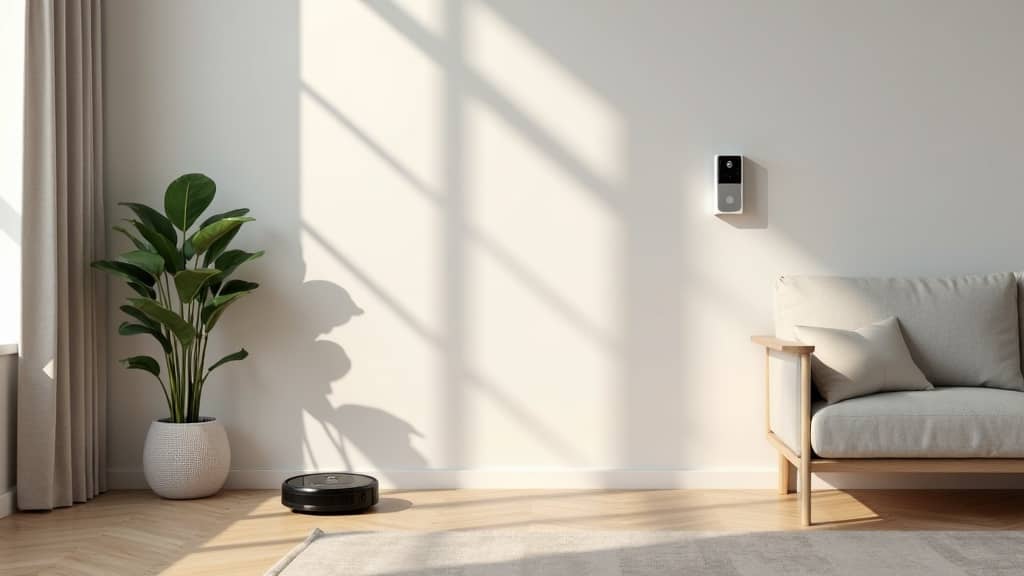
Active Listening Practice
Active listening can transform your interactions into engaging and meaningful exchanges. It goes beyond merely hearing words and involves fully understanding the message through careful attention and thoughtful responses. This approach improves personal relationships as well as professional interactions. In this article, I check out active listening, explain how to practice it, and share tips for overcoming challenges along the way.
Build the Foundation for Active Listening
Active listening starts with a mindset. It requires a commitment to truly engage with the speaker. By setting aside distractions and preparing to listen carefully, you create an environment that is conducive to understanding another person’s perspective. This groundwork is essential for developing genuine empathy and trust.
When you commit to active listening, you will find it easier to pick up on underlying emotions and ideas. Many people find that by simply being fully present, both parties feel more valued and understood. This mutual recognition can lead to more productive and positive interactions, whether in personal discussions or business meetings.
Developing active listening also helps step up your critical thinking skills. As you learn to process information more intentionally, you can respond in a way that reflects a well-rounded interpretation of the conversation. This benefits all parts of your life, from work meetings to everyday chats with friends and family.
Get Started with Active Listening
Before you begin practicing active listening, it is helpful to understand some of the basics. Active listening involves a series of simple yet powerful actions. It means not interrupting the speaker, giving full attention, and then summarizing what was said to confirm your understanding. With practice, these steps can become almost second nature.
Here are some practical steps to get you started on your active listening adventure:
- Eliminate Distractions: Choose a quiet space where you are less likely to be interrupted. Turn off your phone or put it aside so that you can concentrate entirely on the conversation.
- Focus Fully on the Speaker: Look at the speaker and listen with your entire being. Your posture and eye contact should convey that you are interested and engaged.
- Show That You Are Listening: Use small gestures like nodding or brief verbal cues to indicate that you are following the conversation.
- Avoid Interrupting: Let the speaker finish their points before you respond. This allows them to express their thoughts completely without interruption.
- Ask Clarifying Questions: Once the speaker is done, ask questions that help you understand their message more deeply.
- Provide Thoughtful Feedback: Reflect on what you’ve heard by summarizing or paraphrasing the key points. This validates the speaker’s effort to communicate their ideas.
Implementing these steps will give you a practical framework to build your active listening skills over time. Consistent practice contributes to better understanding and more effective communication overall.
Identify Common Challenges in Active Listening
Even with the best intentions, practicing active listening can sometimes be challenging. Recognizing potential hurdles helps you prepare to overcome them. Several factors can interfere with your ability to listen effectively.
- Internal Distractions: It is common to get caught up in your own thoughts or worries while someone is speaking. Noticing these distractions can help you redirect your focus back to the conversation.
- Preconceived Judgments: Sometimes, you might form assumptions about what the speaker is going to say. This may prevent you from listening with an open mind.
- External Interruptions: Background noise or side conversations can also break the flow of listening. Choosing the right environment can minimize these disruptions.
- Emotional Reactions: Strong feelings may cause you to tune out or react impulsively. Being aware of your emotions is very important in order to maintain an objective stance.
These challenges are common but not insurmountable. With awareness and mindfulness, you can steadily overcome distractions and improve your listening. Remember that it is normal to struggle at first; the goal is to keep making gradual progress.
Internal Distractions
It is not unusual to find yourself thinking about other tasks or reflecting on unrelated topics when someone is talking. Training your mind to focus on the present moment is one way to combat this. Techniques such as mindfulness meditation can be very useful tools to improve your concentration during discussions.
Preconceived Judgments
Holding biases or preconceived ideas about a topic can hinder your ability to understand the speaker fully. By consciously setting aside these judgments and approaching the conversation with an open mind, you create space for genuine connection. Recognizing that every conversation offers fresh insights can help remove these mental blocks.
External Interruptions
Physical distractions such as noise or unexpected interruptions can detract from the conversation. Planning for a suitable listening environment makes it easy to stay focused. Whether it means choosing a quieter setting or scheduling discussions when you’re less likely to be disturbed, small adjustments can have a big impact.
Emotional Reactions
Sometimes, the topic at hand may trigger strong emotional responses that cloud your thinking. Taking a moment to breathe or even asking for a short pause can preserve the quality of your listening. Learning to manage these emotional reactions can lead to deeper, more insightful exchanges.
Advanced Techniques for Mastering Active Listening
Once you are comfortable with the basics of active listening, there are several advanced techniques to further refine your skills. These methods help deepen your engagement and ensure that you truly understand the speaker’s intent.
Embrace Empathy: Connect with the speaker on an emotional level by imagining yourself in their situation. This practice helps you understand not just the words, but also the feelings behind them. Empathy plays a key role in active listening by turning an ordinary conversation into an exchange that resonates emotionally.
Recognize Non-Verbal Cues: Much of communication is non-verbal. Learning to pick up on tone, body language, and facial expressions can provide additional context that words alone might not convey. By tuning in to these details, you can get a richer understanding of what’s being communicated.
Reflective Listening Practices: This involves summarizing what you have heard and reflecting it back to the speaker. Doing so not only confirms your understanding but also shows that you are genuinely involved in the discussion. Asking follow-up questions can further boost this method and allow for corrections if necessary.
These techniques can gradually take your active listening skills up a notch. With consistent practice, you can transform everyday interactions into opportunities for deeper connection and understanding.
Basic Core Practices for Stepping Up Listening Skills
Solid active listening also means developing everyday habits that reinforce your willingness and ability to engage. By creating a routine that includes active listening exercises, you can steadily step up your communication skills.
Consider the following practices as central to your active listening routine:
- Practice Mindfulness: Engage in brief mindfulness exercises daily. This will help center your thoughts and improve your focus during conversations.
- Set Conversation Goals: Define clear objectives for your interactions, such as understanding the main point or learning something new from the speaker.
- Be Patient: Cultivate patience. Active listening takes time, and not every conversation will yield immediate insights. Patience helps you absorb what is being conveyed without rushing to judgment.
- Engage in Regular Reflection: After a discussion, take a few minutes to reflect on what was said. This helps consolidate the message and spot areas for improvement.
- Seek Feedback: Ask those you interact with how well they feel listened to. Constructive feedback can offer guidance as you make necessary adjustments.
Integrating these habits into your daily routine can make active listening a natural part of your communication style instead of a forced effort.
Real-Life Applications and Benefits of Active Listening
Active listening is not just about catching every word; it’s about building meaningful relationships and strengthening bonds. When you truly listen, you validate the other person’s thoughts and feelings. This simple practice can transform conflicts into opportunities for connection and foster an atmosphere of trust both in your personal life and at work.
For example, in professional settings, actively listening to your colleagues during meetings can help you pick up on nuances that might otherwise be missed. This attention to detail might lead you to draw important conclusions that can be used to improve team projects. In personal life, when a friend or family member shares their struggles, your undivided attention can be the support they need to feel truly heard and cared for.
Over time, regularly practicing active listening can lead to noticeable long-term benefits. Relationships become more robust, misunderstandings decrease, and you may even see improvements in problem solving. People are often more willing to share ideas or personal feelings when they sense that you are genuinely interested. This creates an environment where everyone feels valued and respected, making social and work interactions that much more productive.
Long-Term Impact and Continued Practice
Developing your active listening abilities is an ongoing adventure. It requires dedication and continuous self-improvement. As you practice regularly, you will begin to notice subtle changes in how you relate to others. Not only does this help in managing conflicts, but it also plays a vital part in personal growth.
Investing time in listening actively can also change the tone of interactions over the long haul. Relationships that are founded on genuine understanding and mutual respect tend to weather conflicts much better. Colleagues who feel listened to might contribute more effectively, and family members may feel more at ease sharing their true feelings. In many ways, the ability to truly listen is a cornerstone for building strong, lasting relationships.
It is also important to note that active listening is not simply about following a set of steps; it is about creating a dynamic and adaptive communication style. Every conversation is unique, and being able to adjust your listening techniques accordingly is very important. By regularly reviewing your interactions and asking for feedback, you will steadily refine your approach. Over time, you’ll find that your conversations become not only more productive but also immensely rewarding on a personal level.
Frequently Asked Questions
Below are some questions that commonly arise when someone begins practicing active listening along with answers to clear things up:
Question: How can I improve my concentration during conversations?
Answer: It helps to remove potential distractions and practice mindfulness. Focusing fully on one person’s words can improve with regular practice and reflection.
Question: What if I find myself interrupting often?
Answer: If you catch yourself cutting in, gently remind yourself to pause and listen first. It takes time to adjust old habits, so be patient and work on gradually reducing interruptions.
Question: How can I know I am truly understanding what’s being said?
Answer: Summarize or paraphrase what the speaker has communicated and then ask if your interpretation is correct. Feedback from the speaker is crucial to ensure that you have grasped the intended message accurately.
Question: Can active listening really improve my relationships?
Answer: Yes, active listening shows that you value the other person’s perspective. This not only strengthens your connections but also builds a foundation of mutual respect and trust over time.
Wrapping Up
Practicing active listening is a rewarding effort that can help you engage with others more effectively. It is not simply about catching every word; it is about understanding emotions and the underlying messages. By truly listening, you let it rip on a deeper level, ensuring that every conversation becomes an opportunity to build trust and understanding.
Remember that developing active listening is a gradual process. Start in environments where distractions are minimal, and use the steps and techniques mentioned above to steadily refine your abilities. Over time, you will notice your exchanges becoming richer and more engaging. This effort is very important for fostering stronger personal and professional connections.
Instead of thinking that successful communication is solely about speaking well, recognize that listening plays an equally key role. When you take the time to really listen, you create an atmosphere where unique perspectives are encouraged and respected. Every conversation then becomes a chance to build a bridge between understanding and empathy.
Real change comes from the consistent practice of these techniques. Over time, you might find that your environment shifts; your colleagues, friends, and family begin to open up more, and you experience a noticeable glow-up in both your social and professional life. This every-day practice of active listening helps set the stage for continuous self-improvement and genuine human connection.
In the end, active listening is about making every interaction count. It is a commitment to not only hearing words but also to grasping the meaning behind them. By putting in the work to truly understand and value each conversation, you build a legacy of respect, empathy, and effective communication that can touch every aspect of your life.
Keep practicing these habits, keep reflecting on your interactions, and remember that each conversation is an opportunity to learn something new. Your ability to listen actively will help you navigate challenges, create deeper bonds, and ultimately achieve a more fulfilling life both at home and at work. Take your time, trust the process, and enjoy the transformative power of truly listening.
Shop tip
Active listening poster on Amazon
Active listening headphones on Amazon
Active listening on Amazon
Thank you for reading, comments and shares!
Other tips or techniques? Let us know 😀
Create your own website
And learn how to monetize it
Heads up! If you’re looking to join Wealthy Affiliate, make sure you sign up using my referral link to get access to my personal coaching and all WA features."






